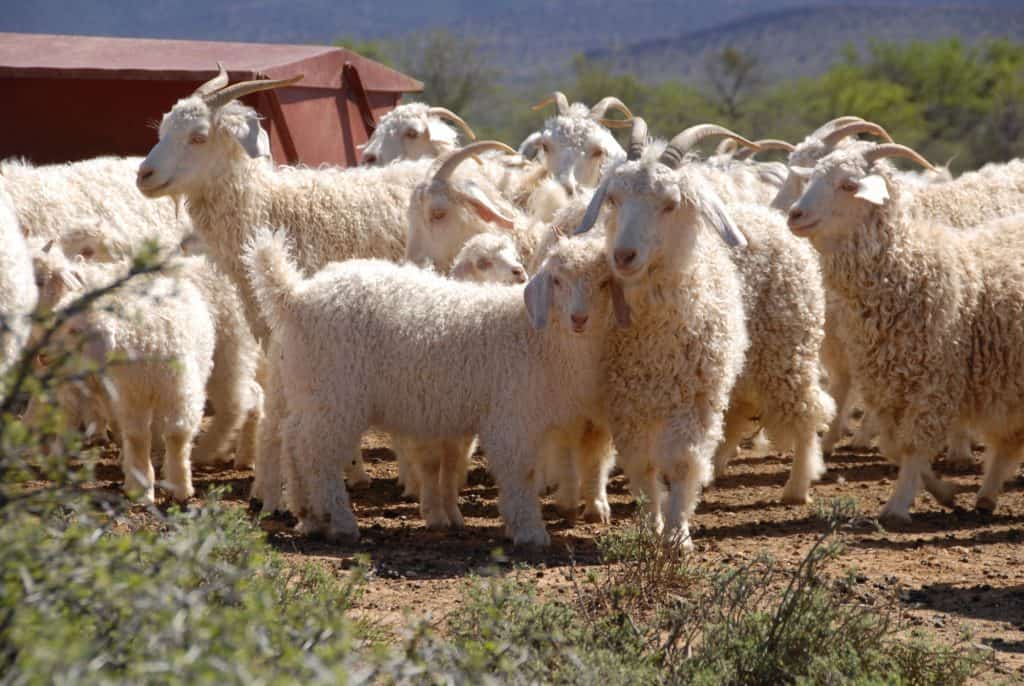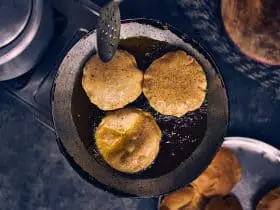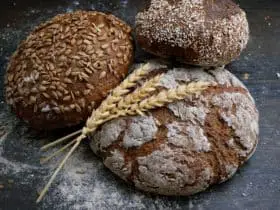People have been wearing animal-based products like mohair while turning a blind eye to what’s actually happening in the shadow.
With the increase in the demand for winter clothes, the mohair industry has grown. However, as always, when you get a reasonable price for anything from the fast-fashion industry, someone out there is paying the price. In this case, it’s the goats.
So, it’s only left to the conscious of consumers to stop this animal cruelty. That’s why we’re going to introduce you to the mohair industry and why it isn’t in line with veganism.
What is Mohair?
First things first, mohair is a type of wool derived from the shaggy hair of Angora goats.
However, don’t confuse it with Angora wool or the mohair used to make the roofs of convertible cars. The former is produced from Angora rabbits, and the latter is just a type of canvas, not wool.
Mohair is one of the most luxurious fibers, thanks to its durability, resilience, and high luster. That’s why some enthusiastic designers go as far as calling it the “diamond fiber.” When blended with another fiber in clothing, mohair tends to lend its luster to the fiber and, in turn, adds to its price.
The diameter of mohair fibers depends on the goats’ age. Younger goats produce thinner fibers used in clothing like sweaters, scarves, and some fluffy accessories. They’re also used to create chunky skeins and lengths of yarn for knitting and crochet.
On the other hand, coarser fibers come from older goats and are used in carpets, drapery, and doll wigs.
Where Does Mohair Come From?

Mohair is considered one of the oldest fabrics in existence. The Angora goat originally lived in the mountains of Tibet until it migrated to Turkey, where it was farmed exclusively for centuries. Nowadays, the industry is centered around South Africa, along with Turkey, Argentina, and Australia. It’s also produced in the United States but to a lesser extent.
How Is Mohair Produced?
Agora goats grow hair coats rapidly. Therefore, on most industrial mohair farms, the shearing process takes place twice a year, once in the spring and once in the fall.
The average goat produces around 15 pounds of mohair fibers annually. In an idealistic world, the shearing process would be performed very carefully, ensuring the animals’ health and welfare.
However, the ugly truth is that workers are paid by the hour, so they try to get through their quotas to make the most money, which results in the horrendous acts we witness.
Why Isn’t Mohair Vegan?
The impact of this industry on the goats is awful. That’s why animal rights organizations like the PETA (People for the Ethical Treatment of Animals) revealed the inhumane practices upheld against the defenseless animals. Here’s why mohair can’t be considered vegan:
Brutal Dehorning
At the age of 1 or 2 weeks, baby goats’ buds are removed in a brutal way. The main purposes of these horns are to provide cooling to the goat in hot weather and act as a defense against other predators. However, farmers usually remove them so that goats won’t be able to seriously injure each other in their crowded farms.
Whether you agree or disagree with their reason for this act, there’s no way to justify how they do it. The process is done by applying caustic chemical pastes on their buds or burning their horns off with hot irons, all without painkillers or anesthesia.
Apart from the pain the animals endure, these methods can cause them blindness and severe burns. Some of these poor younglings keep rubbing their heads, seeking some relief from the pain.
Vicious Handling
In an environment where animals are exploited for fashion and used for profit, it’s typical to find workers handling goats recklessly.
During the shearing process, they were witnessed dragging goats by their horns, throwing them on the floor, and pinning them down while their legs are tied to hold them still. As prey animals, goats are sensitive, so pinning them down is a horrifying experience for them. Yet, that’s not all.
Sometimes workers lift them up by their tails or cut their skins, resulting in the formation of gaping wounds that can get infected easily on the dirty shearing floor.
Another gruesome act is that they remove the males’ testicles using rubber rings, which isn’t only harshly painful, but can also cause them infections like tetanus.
Neglect
Unlike sheep, goats’ bodies don’t carry much fat. Hence, they’re more susceptible to the cold without their natural insulation. Shearing them in fall or winter causes many of them to freeze to death or die of pneumonia. Farmers just neglect the fact that these animals need their coats to go through the chilling weather.
Moreover, they become in a fragile state that renders them vulnerable to malnutrition, infection, and other fatal diseases.
Terrifying Death
The moment they stop being useful to the industry, and when they can’t be exploited anymore for their fur, goats are slaughtered for their meat and skin.
They’re sent to slaughterhouses in crammed trucks where they spend hours in these awful conditions just to get killed by electric shocks or direct throat slitting.
What Happens When You Buy Mohair?

The thing is every time you buy any piece of clothes made of mohair, you partly participate in these crimes by supporting the industry that exploits and slaughters goats for their profit.
As their sales increase, they expand their mohair production farms, increasing the number of animals that get tortured yearly.
On top of that, mohair production drains natural resources and has a negative impact on the environment.
To produce one pound of mohair, goats must be fed on 40-50 pounds of feed, which is grown on large lands that could have been used to grow crops for humans or left for other animals to live and feed.
What Should We Do?
At the end of the day, there is no logic in supporting an industry that exploits, abuses, and kills animals just to add a couple of mohair pieces to your closet or your fancy furniture. Many other cruelty-free alternatives are just as warm, cozy, and elegant as mohair.
For this reason, we advise you to check the tags before you buy and if it says mohair, leave it. Also, spread the word to your friends and families to do the same.












Leave a Reply